Just before the Sapphire Rapids launch, I had the team working on some relatively quick pieces one of them was the Intel VROC Hardware Key Quick Reference Guide. It turns out just before that piece went live, Intel had discontinued VROC almost immediately via a Product Change Notification or PCN. Now, Intel says it is pulling that PCN and will continue supporting VROC. If that sounds like a 360 degree flip in 11 days with a massive 4th Gen Intel Xeon Scalable Sapphire Rapids launch in the middle, it should.
Intel Does a 360 on Discontinuing VROC
Before we get to the latest from Intel, let us first get to what VROC is in the first place. VROC stands for Intel Virtual RAID on Chip. This is effectively software RAID for NVMe devices. Instead of requiring adding a Broadcom Tri-Mode HBA to create NVMe RAID 1 or 10 for Windows or other OS boot devices, one can skip that and just use Intel VROC.
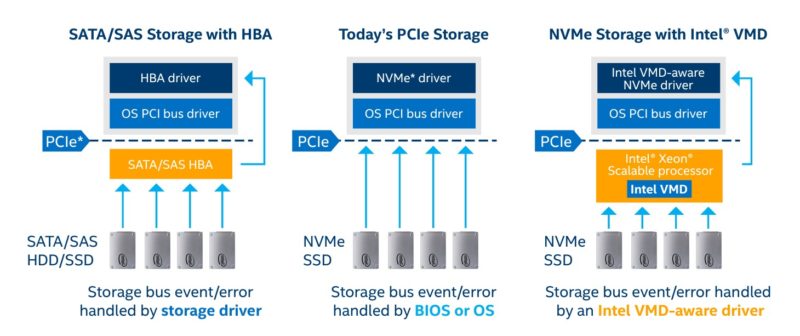
The advantage is severalfold. For legacy OSes without OS-based software RAID boot support, one can mirror boot devices or other devices. That is an important capability alone. Beyond that, by removing a Broadcom (or other brands, but this is a market Broadcom largely dominates) HBA or RAID controller, a PCIe slot is freed, also lowering power consumption and removing a source of airflow restriction from a server. It also costs less to not have to buy a PCIe controller in the first place.
Then came Intel PCN 119406-00 on January 6, 2023.
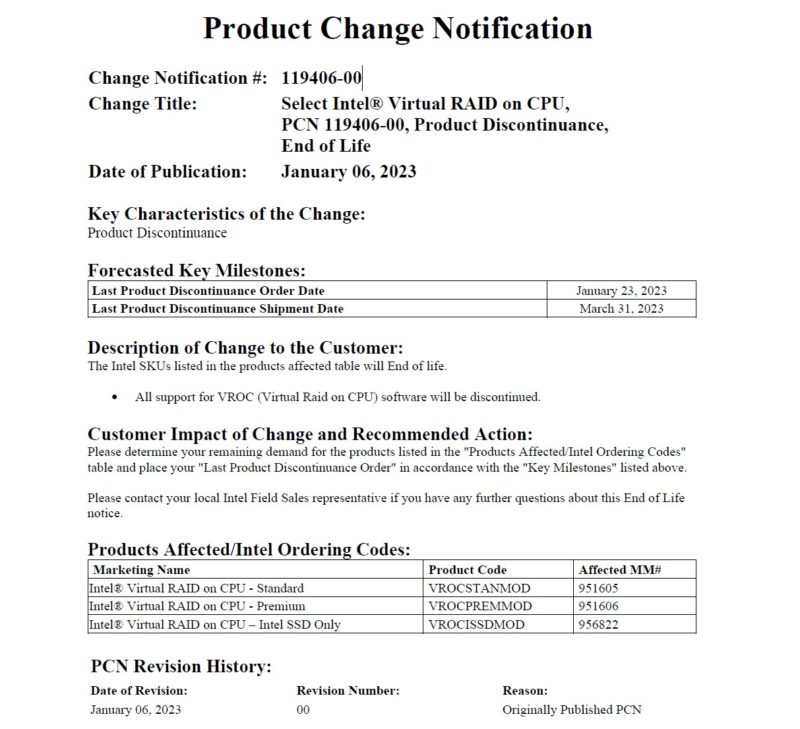
The SKUs are the hardware keys, such as the ones pictured in the cover image of this article. In the VROC guide linked above, we go into the features of each. The key is:
“All support for VROC (Virtual Raid on CPU) software will be discontinued.”
That line gave a January 23, 2023, last order date, so there were only 17 days from the End-of-Life notification being issued to the last order date.
Why that matters is that a few days after the PCN, we had a big launch. The 4th Gen Intel Xeon Scalable Sapphire Rapids launch. For those who have not seen this, I recorded a few videos at Supermicro about its X13 generation of servers. Something that we said but was edited out is that many of the company’s servers support VROC.
This is one of the example platforms from the SuperBlade platform that we showed, stating VROC support:
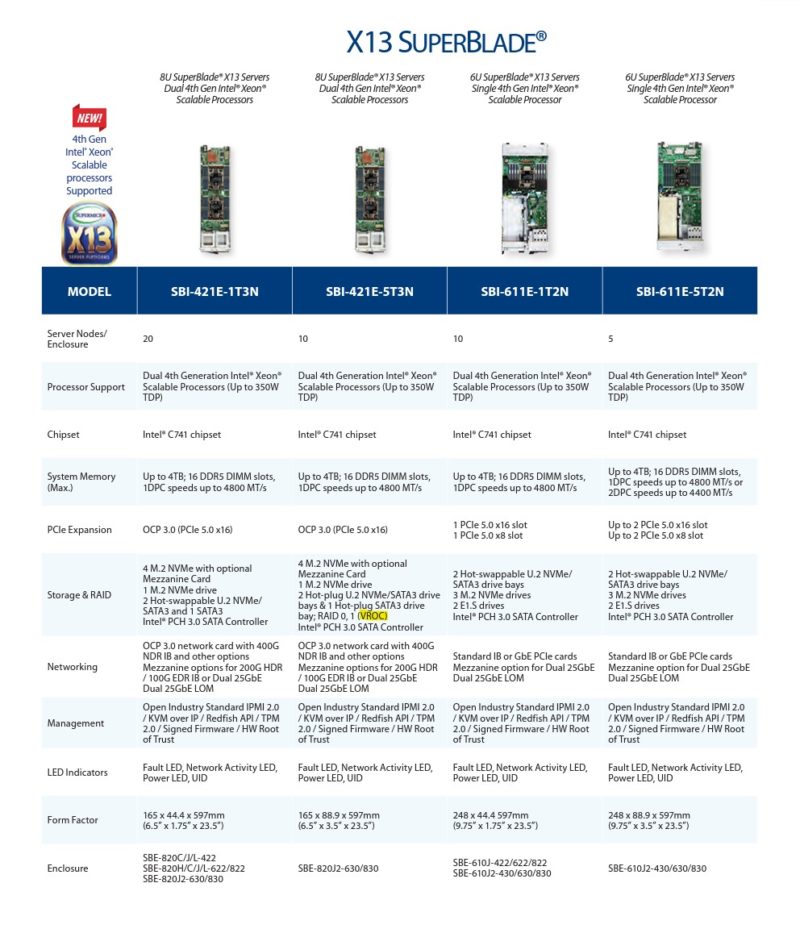
Aside from Supermicro, companies like HPE also stated support for VROC in its launch slides. We posted this one, for example, on the HPE ProLiant Gen11 launch piece:
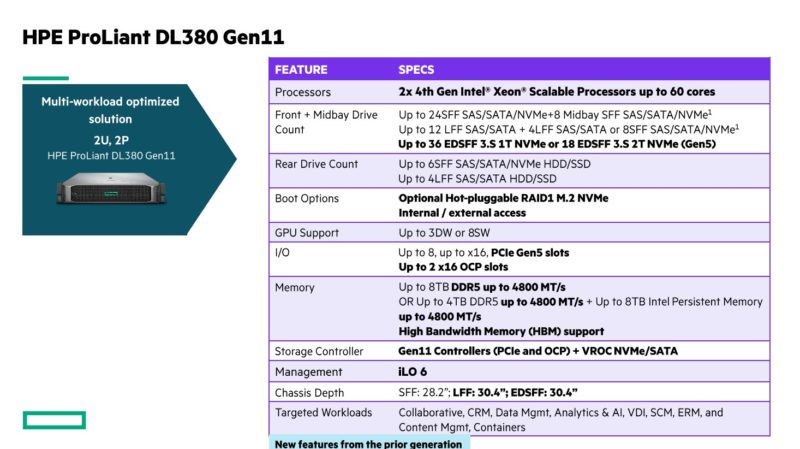
We can clearly see that this was highlighted as a “New features from the prior generation” update.
At this point, we had a strange one. Intel said on January 6, 2023 that it would discontinue VROC in a few days. Then four days later, it had OEMs launching servers with VROC support being advertised.
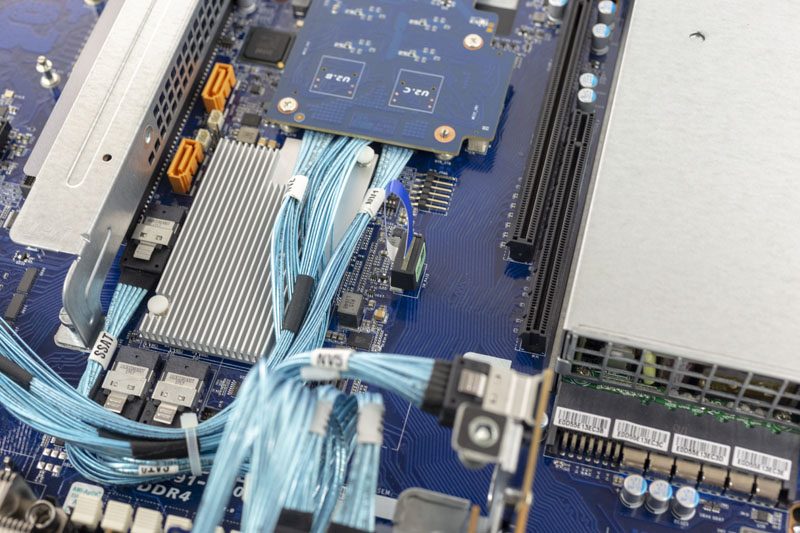
Of course, we asked Intel about this last week, and just got the official response from the company:
“The PCN was prematurely posted while the decision was under evaluation. After discussing with the ecosystem and customers we realize there is significant demand for this product and intend to continue to support it.” (Source: Intel Spokesperson to STH)
For now, it appears as though the January 6, 2023 PCN 119406-00 is going to be pulled, reinstating a future for VROC.
Final Words
It is great to see that VROC is going to continue. It is certainly not perfect. We had been working on a piece prior to VROC being discontinued where we could show the power consumption savings from using VROC and the performance of the solution. Then, that piece was sidelined while we thought it would be discontinued. Also, for a portion of Intel’s enterprise customer base, this is actually a nice feature that is less expensive and more available than getting a Broadcom HBA lately. Our last Broadcom 9500-16i’s took almost two months to arrive. The VROC keys we bought above for that piece took less than 48 hours between ordering and deploying.
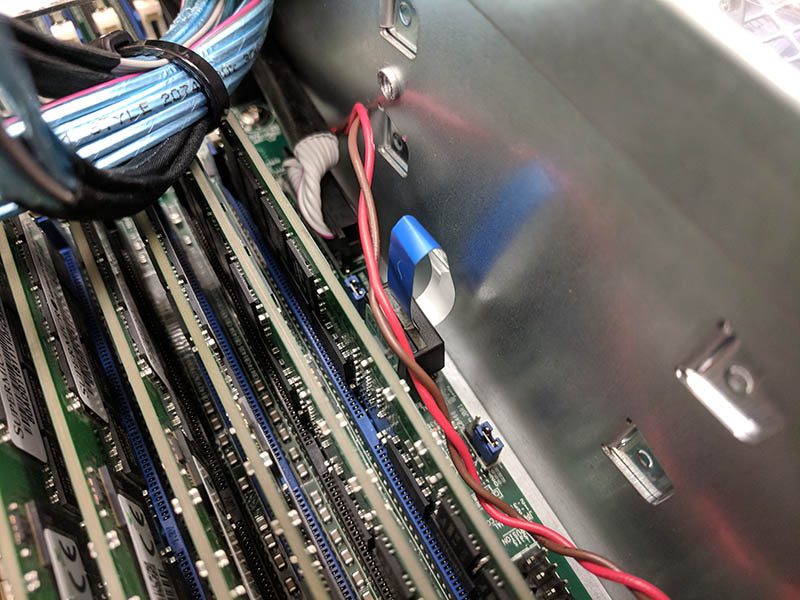
Hopefully, our STH readers enjoyed this 360 on VROC support that played out over the past 11 days. It is an interesting technology that is useful without great alternatives for some segments of the market. It would be great if Intel continues to support it for some time to come. Or perhaps just make it a standard Intel feature instead of this hardware key system.




Besides the power saving and the AIC you are not installing, which can be used for other things – I don’t see the benefit of trading one proprietary RAID solution for another.
If you really want a RAID you can boot from in windows (Windows is the only real problem here I guess, since all other OS should be able to boot from either a ZFS or other “raid”)
By using VROC instead of a AIC, you have suddenly tied yourself to Intel until you reinstall. With a “real” RAID card, you can just move the disks+controller to another motherboard with an AMD CPU if you wanted and expect it would probably work.
“Or perhaps just make it a standard Intel feature instead of this hardware key system.”
Exactly that. I understand that there are R&D costs associated with something like this and the hardware keys would ensure that only the customers who need the features would pay for them. However, wouldn’t it be better to just enable it on all hardware that supports it and add a, say, $3-5 premium to every one of them to spread the cost instead of selling these separate hardware keys that only a tiny fraction of the customers will buy?
360 should be 180 no ?
I think the 360 in this case is first Intel discontinues VROC, then in just a few days reinstates VROC.
With the ‘intel on-demand’/’software defined silicon’ stuff they are introducing I assume that the little dongle units don’t have the brightest of futures; Intel probably doesn’t love the fact that what’s basically just a license key has a BoM cost, a need for board space, and a risk of being legally resold; so a mechanism that can just crunch license keys in software seems likely to kill them off; it seems like it would be a much, much, bigger surprise if they actually killed off the capability itself.
For what small SSDs don’t cost these days being able to move to a redundant boot device without throwing an entire HBA at the problem seems like an obviously worthwhile feature; even if Intel has little or no interest in doing the ongoing work to make VROC competitive with what the high end RAID and RAID-ish storage mechanisms can do.
I’d expect that Intel will be back to kill off physical license dongles again in the near-ish future, once the market has moved enough in the direction of ‘on-demand’ capable hardware; it would be a lot more surprising and harder to understand if they tossed out the ability to do at least some bootable software RAID, at least for a few common lightweight configurations.
360 = full circle, 180 = half a circle/opposite direction
180**
As Robert Szolt supposed, a small premium $3-5 to Xeon price could easily compensate all R@D efforts on implementing built-in NVMe RAID capabilities – which in fact sit in the silicon already. Without any ugly physical key and on-demand software keys. Just because everything is gonna be NVMe.
Thanks for the coverage of this. I wonder how much this may be related to selling off their hard drive IP and division? Easier to justify software RAID development when you also develop NVMe drives which are the target use case.
As a Windows shop I do feel stuck though. The BOSS type cards Dell and Supermicro sell are fine for boot, but as noted they take up a slot. All of our on prem compute and storage needs that are not backup can increasingly be met by a 2U or 1U space – needing an external ZFS or other storage complicates the system design vs internal direct attached storage that “just works”. And as the price of SSDs drops, they are being used for backup too, making the gap even more acute.
I would like to order 10 ea. Can it use with hp z4g4, pls advise contract channel
Has anyone done a performance comparison of Intel VROC on Linux vs standard md raid on Linux? All of intel’s marketing and most other reviewers are comparing it only to hardware raid controllers. Intel’s marketing documentation and white papers don’t lead me to believe it provides an advantage on linux over the standard RAID tools.